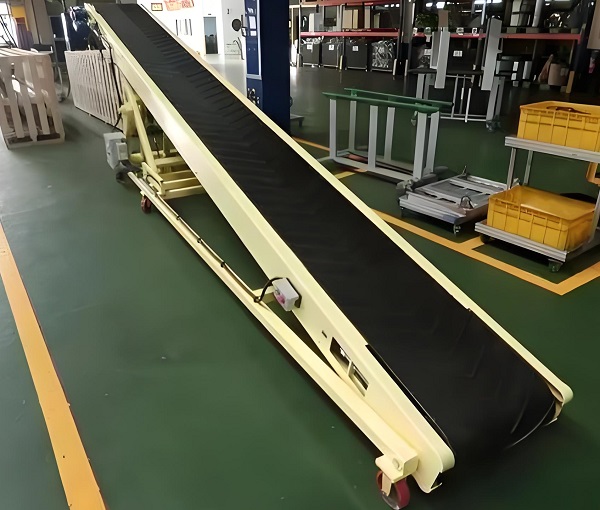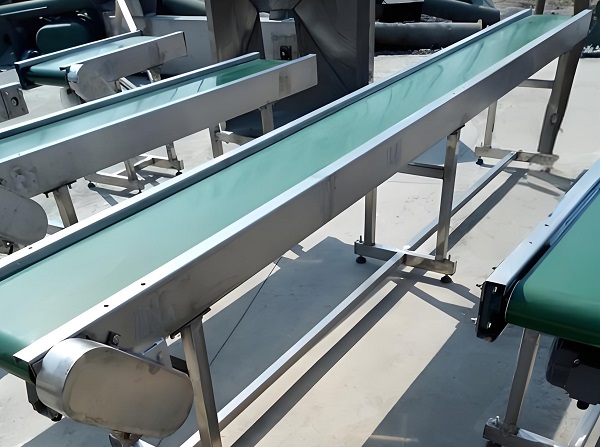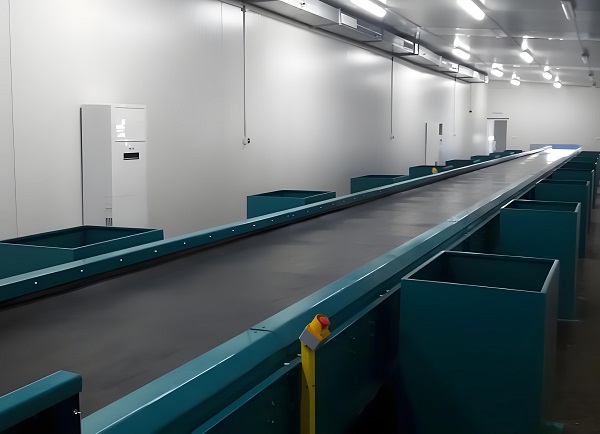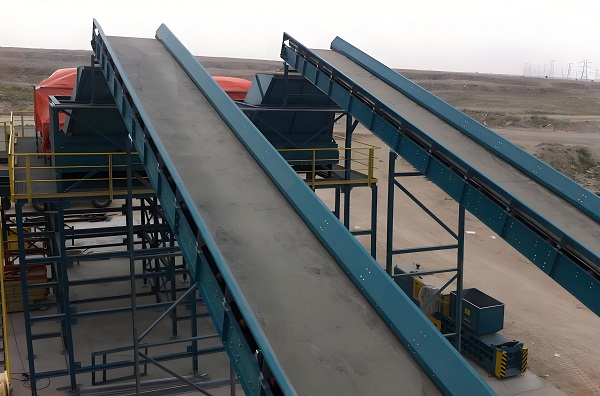Belt conveyors are critical equipment in industrial production, logistics, and transportation. Their selection and procurement directly impact production efficiency and operating costs. Purchasing a belt conveyor requires comprehensive consideration of multiple factors, including actual needs, equipment performance, and manufacturer strength. The following is a detailed purchasing guide.
1. Clarify Your Needs

Before purchasing a belt conveyor, you must first clearly understand your specific requirements. This serves as the foundation for subsequent selection and procurement.
The characteristics of the materials being conveyed must be determined. Different materials place varying demands on conveyors. For example, when conveying bulk materials like coal and ore, the conveyor's load-bearing capacity and wear resistance must be considered. When conveying powdered materials like grain and flour, the equipment's sealing must be ensured to prevent leakage and dust. When conveying corrosive materials, corrosion-resistant materials must be selected for conveyor belts and related components. Furthermore, material temperature is crucial. High-temperature materials require conveyors with high-temperature resistance to prevent damage.
Transport capacity is another key parameter. Based on actual production or transportation needs, calculate the hourly volume of material to be conveyed to determine conveyor belt width, belt speed, and other parameters. Too low a conveying volume can affect production progress, while too high a volume can lead to equipment waste and increased energy consumption.
The conveying distance and angle also need to be clearly defined. Horizontal, inclined, or vertical conveying require different structural design requirements for the conveyor. Inclined conveying requires consideration of material slippage, and may require the installation of side guards, partitions, and other devices. For longer conveying distances, the equipment's power configuration and tensioning device must be optimized to ensure stable conveyor operation.
Also, the operating environment must be considered. If used outdoors, the conveyor must be rainproof, sunproof, and frostproof. Dusty environments require appropriate dust removal equipment. In confined spaces, a compact conveyor with a small footprint should be selected.
2. Selecting the Appropriate Conveyor Type
There are many types of belt conveyors, each suitable for different scenarios. The appropriate choice should be based on your needs.

General-purpose belt conveyors are suitable for conveying most common materials. They have a simple structure and low cost, and can be used for horizontal or shallow-angle conveying. They are widely used in industries such as mining, metallurgy, and building materials. Conveyor belts are typically made of rubber, offering excellent flexibility and wear resistance.
High-angle belt conveyors are suitable for conveying materials at steep angles. By adding sidewalls and cross-plates to the conveyor belt, they effectively prevent materials from sliding down during incline conveying, enabling inclined conveying at angles ranging from 0° to 90°. They are widely used in coal mines, docks, granaries, and other locations.
Tubular belt conveyors offer excellent sealing properties. The tubular structure of the conveyor belt wraps the material during conveying, effectively preventing it from scattering and being affected by the environment. They are suitable for conveying materials that are prone to dust, pollution, or require protection, such as cement, grain, and garbage. They can also bend and adapt to complex terrain.
Mobile belt conveyors are also available, equipped with wheels, allowing for flexible movement as needed. They are suitable for material loading and unloading, temporary handling, and other applications, such as warehouses, stations, and ports.
When selecting a belt conveyor type, consider factors such as the characteristics of the conveyed material, conveying volume, conveying distance, angle, and operating environment. Consult with a professional technician if necessary to ensure the selected type meets your specific needs.

3. Select a Reliable Manufacturer
Choosing a reliable manufacturer is key to ensuring the quality and after-sales service of your belt conveyor.
Investigate the manufacturer's strength and scale. You can understand their production capacity and technical level by reviewing their business license, production qualifications, and factory equipment. Strong manufacturers typically have advanced production equipment and a comprehensive quality management system, ensuring product quality. Also, understand the manufacturer's production history and market reputation, choosing one with a strong reputation and established reputation within the industry.
Product quality is a key consideration. Request the manufacturer to provide documentation such as product quality inspection reports and material certifications to understand the quality and brand of key components such as conveyor belts, rollers, idlers, and motors. You can conduct an on-site inspection of the manufacturer's production process to observe their production processes and quality control measures. Additionally, inquire about the manufacturer's product warranty period and after-sales service coverage to ensure timely repair and maintenance should any equipment problems arise.
Customization capabilities are also crucial. Different users may have unique requirements, such as conveyor lengths, widths, angles, or materials. Manufacturers need strong customization capabilities to design and produce equipment that meets user needs. You can review the manufacturer's past customization cases to understand their experience and capabilities in customization.
Price is also a factor to consider, but don't just focus on price. Consider factors such as product quality and after-sales service to choose a manufacturer with the best value for money. When communicating with the manufacturer, be sure to explain your needs in detail, obtain an accurate quote, and compare quotes and proposals from different manufacturers to select the one that best suits you.
4. Contract Signing and Payment
After deciding on the manufacturer and equipment model, a detailed purchase contract should be signed to clarify the rights and obligations of both parties.
The contract should clearly define the equipment's specifications, model, quantity, material, and technical parameters to ensure agreement between both parties. It should also specify the delivery time, location, and transportation method, as well as the division of responsibilities during transportation. For customized equipment, the design plan and acceptance criteria should be clearly defined to avoid subsequent disputes.
The payment method and deadline are also important aspects of the contract. Typically, payment methods include an upfront deposit, cash on delivery, and a final payment upon successful acceptance. The payment ratios and timings for each stage, as well as the account information for payment, should be clearly defined. The contract should also specify liability for breach of contract, such as compensation for the manufacturer's failure to deliver the equipment on time or if the equipment does not meet quality requirements, as well as the buyer's liability for failure to pay on time.
Before signing the contract, carefully read the contract terms to ensure that all details are clear and unambiguous. If any questions arise, communicate with the manufacturer promptly to revise and improve the contract terms before signing.
5. Equipment Acceptance and Installation and Commissioning
Upon arrival, the equipment should be promptly inspected. First, check that the packaging is intact and free of damage or deformation. Then, check the specifications, model, and quantity of the equipment against the contract and packing list, and that all key components are present and free of damage or missing components. Also, check that all documents, such as the product's quality inspection report and certificate of conformity, are complete. If any issues are found, communicate with the manufacturer promptly to resolve them.

After successful acceptance, the manufacturer will typically provide installation and commissioning services. During the installation process, cooperate with the manufacturer's technical staff and provide the necessary installation conditions and assistance. After installation, conduct a trial run to check the equipment's operating conditions, such as whether the conveyor belt is deviating, whether the motor is operating properly, and whether the conveying capacity meets the requirements. Any abnormalities should be promptly reported to the manufacturer's technical staff for adjustments and repairs until the equipment is operating normally.
After the equipment has been installed and commissioned, operators should receive training to ensure they master correct operation, routine maintenance, and troubleshooting common faults. Also, keep the equipment's instruction manual, service manual, and other materials handy for future reference during operation and maintenance.
Purchasing a belt conveyor requires careful consideration. From clarifying requirements, selecting a type, and choosing a manufacturer to signing the contract and completing installation inspections, every step must be carefully considered to ensure that you purchase equipment that meets your needs and is of reliable quality, providing strong support for production and transportation operations.